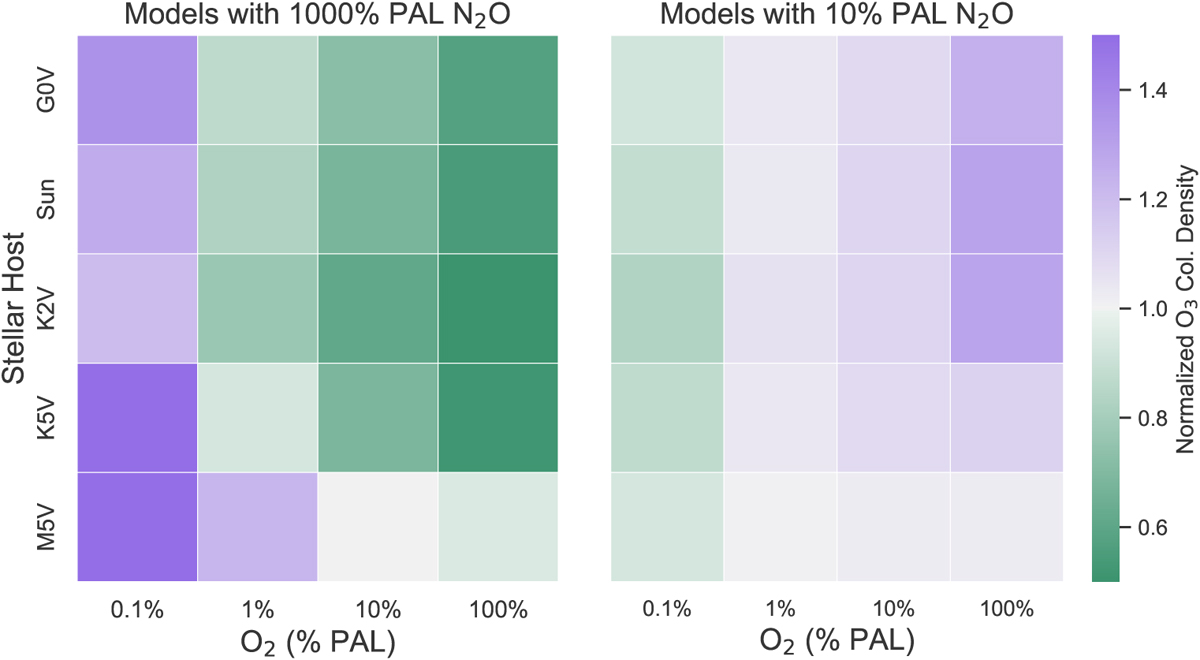Fig. 3

Download original image
Total O3 abundances for models with high N2O (left) and low N2O (right) normalized to models with modern levels of N2O from Kozakis et al. (2022). Overall, the high N2O models impacted the O2-O3 relationship more than the low N2O models, with the results being highly dependent on the stellar host and the amount of O2. High N2O models with hotter stars experience significant O3 depletion due to faster NOx catalytic cycles caused by increased N2O. However, for the high N2O models at very low O2 levels, planets around all the hosts experience an increase in O3 due to the higher efficiency of the smog mechanism once the Chapman mechanism is limited by low amounts of O2. The M5V-hosted planet in particular experiences an increase in O3 with the high N2O models beginning at 10% PAL O2 and lower, due to the increased capabilities of the smog mechanism in this lower UV environment.
Current usage metrics show cumulative count of Article Views (full-text article views including HTML views, PDF and ePub downloads, according to the available data) and Abstracts Views on Vision4Press platform.
Data correspond to usage on the plateform after 2015. The current usage metrics is available 48-96 hours after online publication and is updated daily on week days.
Initial download of the metrics may take a while.


